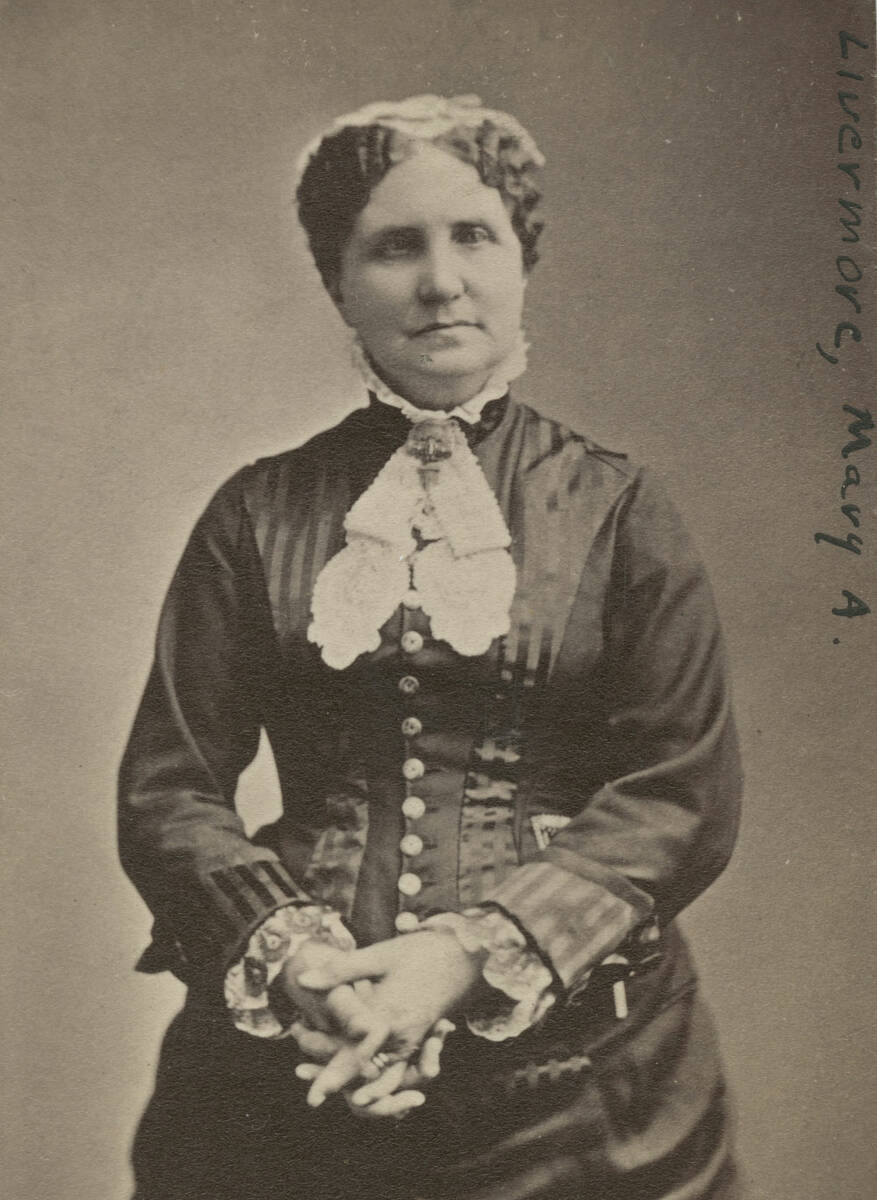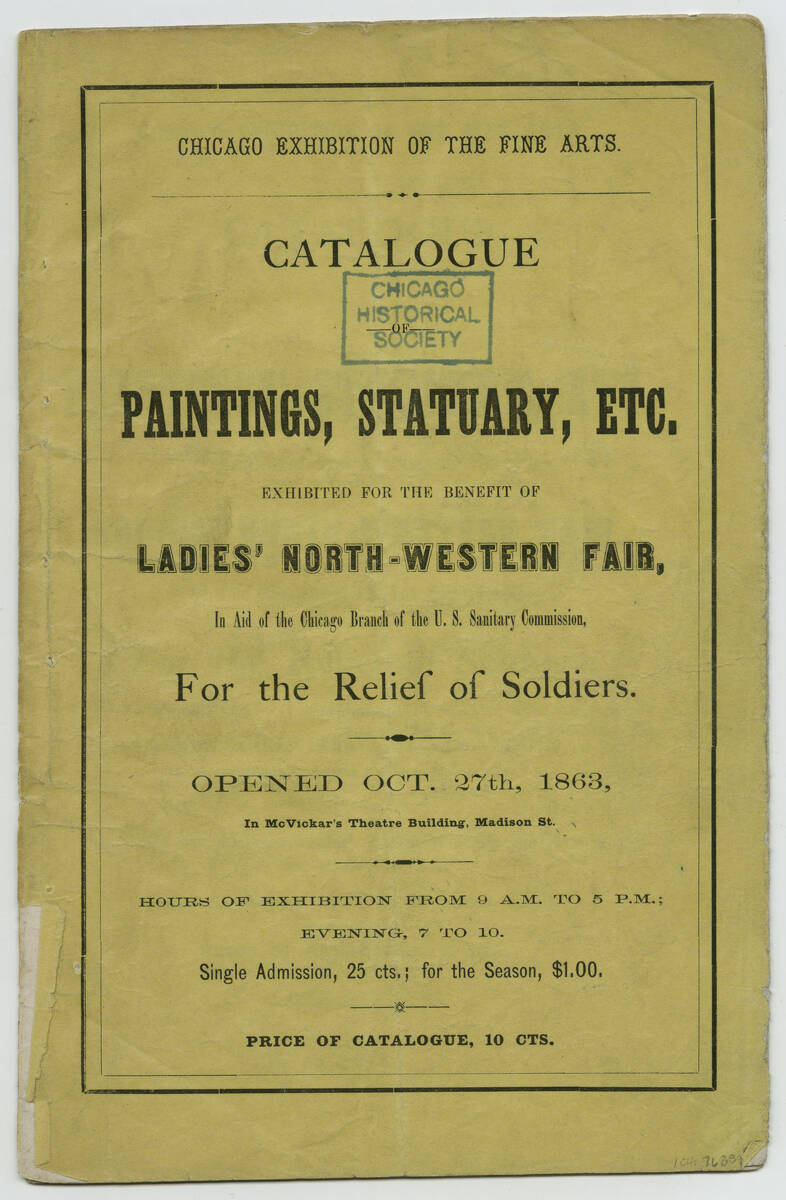Mary Livermore
CHM curatorial intern Brigid Kennedy recounts the life and work of Mary Livermore.
Mary Livermore dedicated her life to abolition, temperance, women’s suffrage, and supporting the Union during the Civil War. Skilled in organizing, raising awareness, and gaining support for her causes, Livermore became a friend to Abraham Lincoln, a popular orator, and a key figure in the Union’s victory.

Figure 1: An undated portrait of Mary A. Livermore. CHM, ICHi-051132
Born in Boston on December 19, 1820, Livermore spent her early years there working in a secondary school—even editing a temperance newspaper for young people.
Livermore, her husband Daniel, and their family planned to move to Kansas in 1857 with other abolitionists, intending to secure Kansas as a free state. Before the move was complete, their daughter became sick and the family decided to settle in Chicago.
Livermore quickly established herself as a philanthropist in the rapidly growing city. She cofounded the Home for the Friendless, Home for Aged Women, and the Hospital for Women and Children in her first six years in the city. Then, the Civil War broke out.
In June 1861, it became clear that the Union Army was suffering more from illness and malnutrition than from Confederate weaponry, and Lincoln established the United States Sanitary Commission to centralize civilian relief efforts. A Chicago branch opened soon after, managed by Livermore and Jane Hoge. Livermore toured Union encampments and battlefront hospitals, delivering supplies, attending to the wounded, and bringing back news from the front.
In early 1863, Ulysses S. Grant praised the Sanitary Commission and credited them with saving many lives. Still, Grant’s needs were beyond what the Commission could provide as his army closed in on Vicksburg, Mississippi, and he requested more aid.

Figure 2: Front cover of Catalogue of Paintings, Statuary, Etc. exhibited for the benefit of the Great Northwestern Fair, 1863. CHM, ICHi-076889
Livermore and Hoge proposed a Great Northwestern Fair, where they could auction off or sell food, entertainment, and mementos of the war. They recruited thousands of volunteers, almost all women, to plan the event—the first of its kind.
Livermore acquired war mementos for auction from across the Midwest, and even requested assistance from Abraham Lincoln, who donated the original Emancipation Proclamation. It sold for $10,000 and found a home at the Chicago Historical Society before being destroyed by the Great Fire in 1871.
The 1863 Great Northwestern Fair was a resounding success. Livermore had hoped to earn at least $25,000, and in the end, the Sanitary Commission made more than $86,000 from the estimated eighty-five to ninety thousand visitors. The fair fundraising model became popular, and soon similar events were held in other American cities.
After the war, Livermore focused her energy on fighting for women’s suffrage. In 1869, she organized Chicago’s first suffrage convention and established The Agitator, a suffrage newspaper.
In 1870, Livermore returned to Massachusetts, but continued her work in Chicago from afar. She traveled the country, lecturing on the history, lives, and experiences of women. She wrote two autobiographies and other texts supporting the rights of women.
Although Mary Livermore didn’t plan to spend such a large portion of her life in Chicago, the life she built here not only made her instrumental to the Union war effort, but also made the day-to-day lives of many Chicagoans—especially women—safer through her philanthropic and activist work.
For Educators: Student Reading and Response Guide
Vocabulary
- Orator: a public speaker, especially a person who is skilled at moving an audience
- Union Army: During the Civil War, the Union Army (also called the Northern Army) fought on behalf the United States government, with President Abraham Lincoln as commander-in-chief, in an effort to preserve the Union—the collection of states that forms the United States.
- Temperance: not drinking alcohol. The Temperance Movement began in the 1820s and emphasized the negative effects of alcohol on health and family life.
- Abolitionists: people who worked to end slavery
- Philanthropist: a person who seeks to help others by donating money to good causes or using their money to establish organizations that assist people
- Centralize: when an activity or organization is controlled by a single authority or managed in one place
- Suffrage: the right to vote in political elections
- Agitator: a person who urges others to protest or rebel
Text Questions
- The blog describes the amazing variety of Mary Livermore’s activist work. What do you consider her greatest accomplishment? Why did you choose this?
- What was groundbreaking about the approach Livermore took in planning and running the Great Northwestern Fair?
- Livermore named her suffrage newspaper, The Agitator. Agitators convince others to join a cause or to protest unfair situations. What is one way Livermore led by example to make positive change?
- Like all people, Livermore had many aspects to her identity. Some words to describe her include: author, organizer, and suffragist. What other words would you add to this list?
Journal Prompt
- In the final text question, you considered aspects of Livermore’s identity. Make a list of words and phrases that describe you. Now think about yourself ten years in the future. What words or phrases do you hope to add to your list? How can you achieve these goals?
 Back to Additional Content
Back to Additional Content